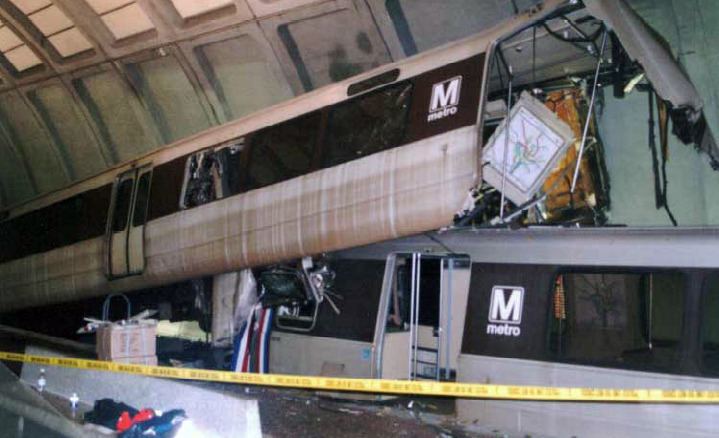 | ||
In a railway accident, telescoping occurs when the underframe of one vehicle overrides that of another, and smashes through the second vehicle's body. The term is derived from the resulting appearance of the two vehicle bodies: the body of one vehicle may appear to be slid inside the other like the tubes of a collapsible telescope - the body sides, roof and underframe of the latter vehicle being forced apart from each other.
Telescoping often results in heavy fatalities if the cars telescoped are fully occupied. The car riding on top will often be destroyed by the structure of the car below, leaving very little survivable space (although the physics of the incident may reverse the cars' roles). The chances of telescoping can be reduced by use of anticlimbers and crash energy management (CEM) structural systems.
Accidents where telescoping occurred are numerous and include:
To reduce the chance of telescoping, rail and tramway vehicles are often provided with an anticlimber: a horizontally ridged plate at the end of the chassis, which in a collision will engage with the anticlimber on the next car.
